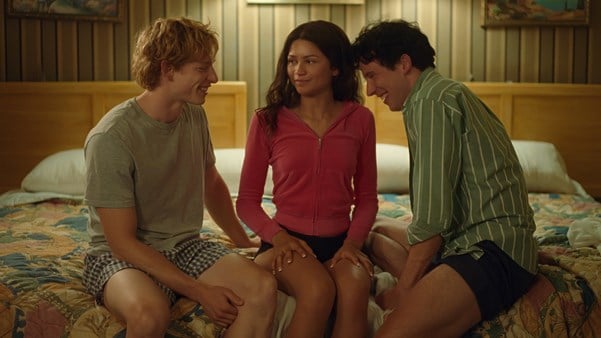Meg Walters considers how Kirsten Dunst, Emma Stone and, now, Zendaya used tennis movies to springboard their careers into new directions.

‘It turns out all I’m good at is hitting a ball with a racket,’ says Zendaya’s Tashi about halfway through Luca Guadagnino’s Challengers. Tashi is an ex-tennis prodigy whose blossoming career screeches to a halt following a devastating knee injury. After years of resolutely training for athletic glory, her only skill, and (perhaps more importantly) her only passion, is tennis: the brutal, beautiful synergy that takes place between the players, the rackets and the ball. And so, she has turned to coaching as a disappointing alternative to playing, transplanting this passion onto other players – namely her husband Art (Mike Faist).
Earlier in the film, Tashi describes what she loves about tennis: ‘It’s a relationship,’ she says. What she means is, when two players really start playing together, it becomes sublime. The climactic scene of Challengers is not, as the trailer and social-media hype might have you believe, to do with sex. Instead, it happens when Art and his old doubles partner – and Tashi’s old ex – Patrick (Josh O’Connor) stop playing games and start playing real, sublime tennis. Tashi is finally getting a taste of what she has been missing. The film ends with Tashi giving a guttural, primal cry: ‘Come on!’

Challengers (2024)
Zendaya is very, very good at portraying this fierce hunger for a good game of tennis. Tashi is a character whose unswerving passion for her sport has given her an almost menacing ferocity – a single-mindedness that drives her every move. It is a great role, and it’s easy to see why Zendaya wanted to do it. After shooting to fame with her darkly vulnerable, Emmy-winning turn as a drug-addicted teen in Euphoria (2019–), she got a taste of blockbuster stardom with the MCU’s Spider-Man films, before her acclaimed performance in Dune: Part Two made her one of the up-and-comers to watch. Challengers will surely be the nuanced ‘leading lady’ role that fully cements her place on the scene; indeed, it’s the first time Zendaya’s name appears at the top of a film’s call sheet.

Of course, Zendaya is not the only actress to latch onto a tennis-player role just as her career seems to be on the brink of skyrocketing. In fact, it’s becoming something of a trend. Although I’m not suggesting that portraying a tennis player turned these actresses into stars, there seems to be something about tennis players – and their unique brand of blazing, primal determination – that proves irresistible to performers at the very moment when they are looking to take their careers in a new direction. Before Zendaya signed on for Tashi, Kirsten Dunst and Emma Stone, both now firmly established leading ladies in their own right, also picked up rackets and donned their tennis whites.
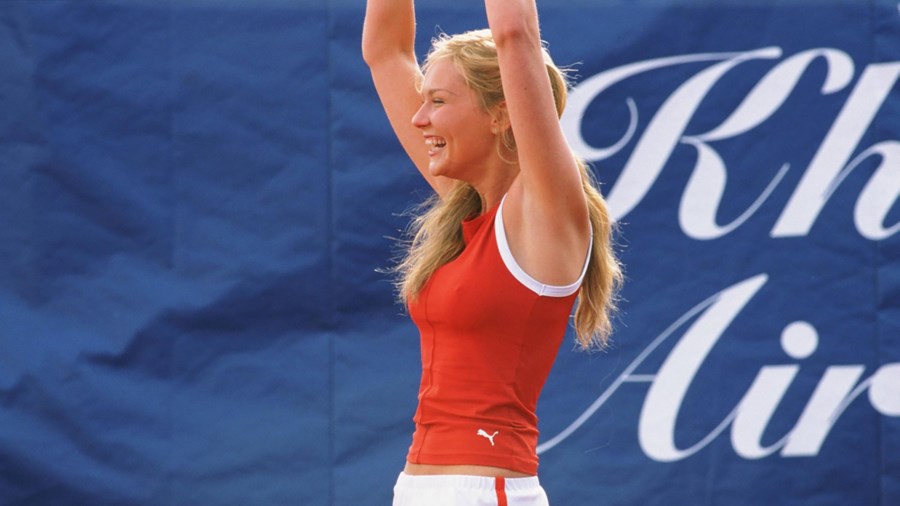
Wimbledon (2004)
First came Dunst, playing up-and-coming tennis player Lizzie in the lighthearted rom-com Wimbledon (2004). Set at the famous London Grand Slam, the film sees Lizzie helping Paul Bettany’s Peter rediscover his zest for the game (she falls for him in the process, naturally). While Wimbledon may be frothy, romantic fare, Lizzie is your typical tennis pro. ‘She makes a decision, she goes for it,’ observes Peter’s agent as she smashes a ball down the line.
Dunst secured this part right after her star-making turn in Sam Raimi’s Spider-Man (2002), having already achieved teen fame with The Virgin Suicides (1999) and Bring It On (2000). In many respects, taking on her first co-leading role in a rom-com was her way of declaring to the world that she was graduating from her high-school repertoire. As she admitted at the time, Wimbledon, though thematically slight, was one of her biggest acting challenges to date – especially in comparison to the ‘more juvenile’ Spider-Man films. It marked the beginning of an era of grown-up leading roles such as Marie Antoinette (2006), How to Lose Friends & Alienate People (2008) and Melancholia (2011).
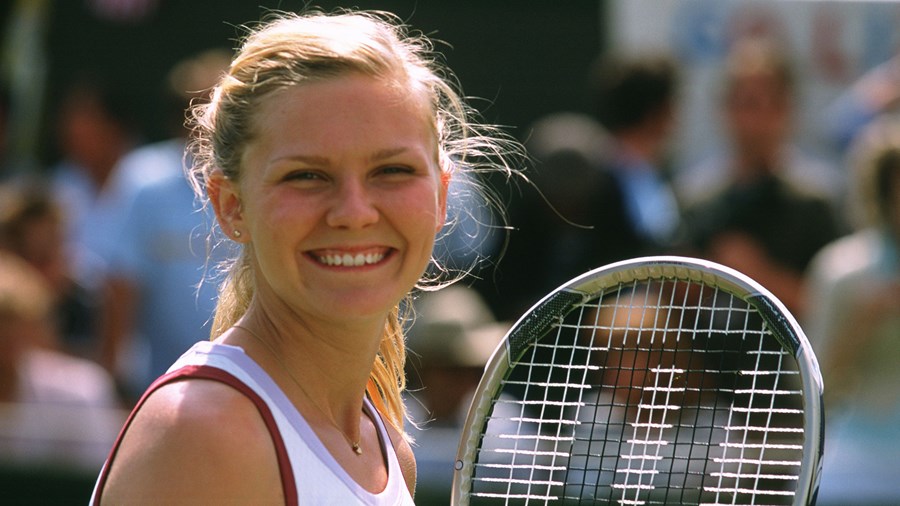
Wimbledon (2004)
Emma Stone did her tennis movie, 2017’s Battle of the Sexes, right after La La Land (2016). Bizarrely a third ex-Mary Jane, Stone was a little further along in her career than Zendaya and Dunst at that point. She too began acting as a child, and later found fame with adolescent roles in films like Superbad (2007), Easy A (2010) and, of course, Marc Webb’s The Amazing Spider-Man (2012). By the mid-2000s, she was tipped to become the next big thing, and soon enough, she was. After starring in 2011’s (at the time) prestigious race-relations drama The Help, Stone picked up her first Oscar nomination for 2014’s Birdman, and went on to win a Best Actress Academy Award playing La La Land’s starry-eyed ingénue two years later. And so, by the time she laced up her trainers on Battle of the Sexes, she was already on Hollywood’s A list.
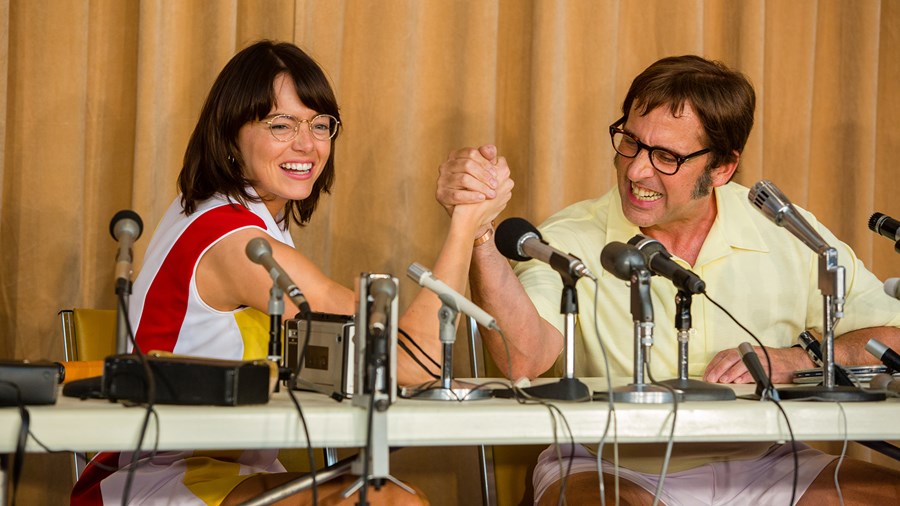
Battle of the Sexes (2017)
The film nonetheless marked a slight career transition for the actress into more socially conscious roles. Based on the famous 1973 match between Billie Jean King (Stone) and Bobby Riggs (Steve Carell), Battle of the Sexes is a historical biopic that depicts a key moment in second-wave feminism. The film was Stone’s way of declaring her own stance on sexism. ‘Billie Jean is so inspiring and has done so much for equality on every level and so that was a huge draw in wanting to be part of this story,’ Stone told British Vogue. ‘I want to show my generation, who maybe didn’t watch the Battle of the Sexes, the history of this incredible woman and all she’s achieved. And why we still need to continue the fight.’ After Battle, Stone continued choosing smart, informed, often political projects in this vein. Poor Things (2023), for instance, deals with female pleasure and empowerment, while The Curse (2023–) tackles white fragility, gentrification and colonialism.
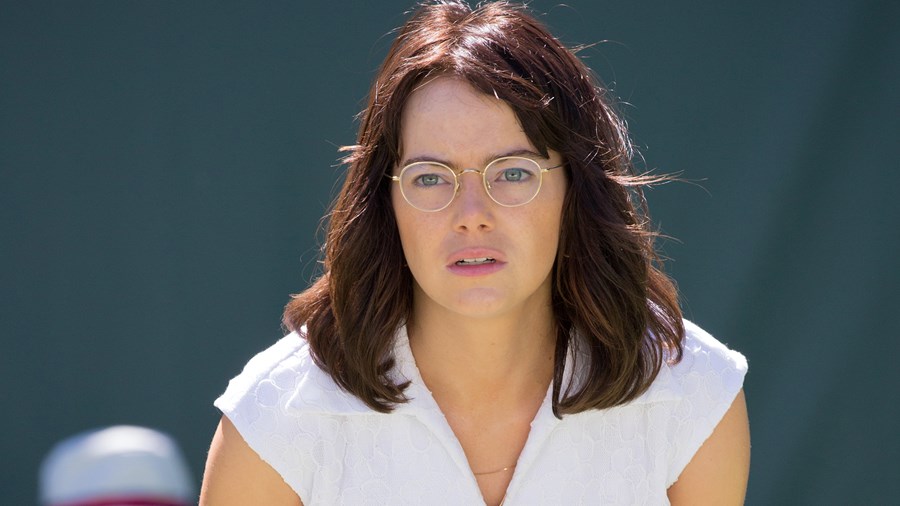
Battle of the Sexes (2017)
So if playing a fierce tennis pro was a chance for Stone to bring her politics to her work, for Dunst and Zendaya it provided an opportunity to step away from teen roles. In Challengers, Tashi is a three-dimensional woman whose obsession with tennis leaves her flawed. As the narrative spans across the years, we see her mature from a high-school tennis prodigy into a domineering wife and a loving, but distracted, mother (another first for Zendaya). As opposed to supporting male leads, as she did playing love interests in The Greatest Showman (2017) and Malcolm & Marie (2021), Zendaya’s character drives the story here. Tashi is at the centre of Challengers, with Art and Patrick chasing, lovestruck, after her.

Challengers (2024)
Portraying a tennis player is, in many ways, the ultimate gift for a young actress looking to flex her muscles and show her range. You get to stare, unblinking, across the court, mustering up your most determined gaze. You get to put all of your angst and trauma into the physical, primal whack of a ball. And, you get to embody a focused, crystal-clear desire. What could be more exciting?
Ball skills aside, these athletes aren’t that far removed from actresses, either. Tennis players need to be dogged in their pursuit of perfection. Actresses can recognise the drive, the single-mindedness, the quiet ferocity and the love of the craft required to make it in their own business. A young and fiercely determined Stone famously created a PowerPoint presentation in an attempt to convince her parents to let her move to Los Angeles to pursue acting, while Zendaya previously admitted, ‘I don’t really know Zendaya outside of the Zendaya who works.’ At the end of the day, acting is not so dissimilar from hitting a ball with a racket. And, for young women transitioning into grown-up, socially minded careers on screen, stepping onto the court has become the ultimate rite of passage.
WATCH CHALLENGERS IN CINEMAS


